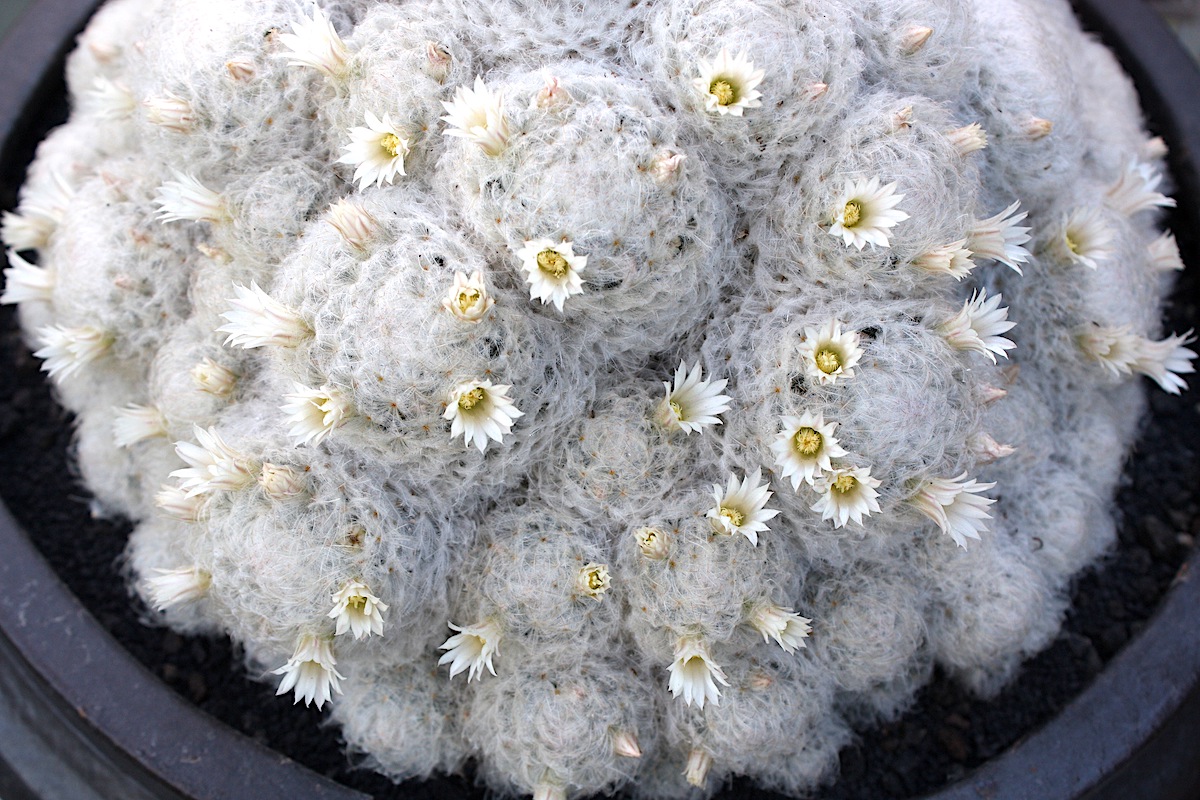
Tips for Remembering Succulent Names
Ever wish you could understand and remember succulent names? It's especially challenging when they've changed, multiple common ones exist, and Latin binomials (genus + species) are long and unpronounceable. Here I share my own experiences in order to help, offer hope, make you feel better, and entertain you.
It kills me when I get a plant name wrong
I agonized over getting Latin botanical names right when writing the first edition of Designing with Succulents. When the galleys arrived, I watched my son---still at home at the time---turn the stack of glossy pages. “Looks great Mom, but why all the Latin?" he asked. "Why not just use common names?” Hm. Just stab me.
A decade later, as I revised and updated the same book---which (modesty aside) had managed to propel succulents into the stratosphere---my publisher wanted both Latin and common names. Certainly common ones are easier to remember. However, they tend to vary regionally and even among growers and nurseries, are often inaccurate, and confound non-English speakers.
Granted, Latin binomials may strike readers as irrelevant, even ridiculous. Whenever I browse the Internet for fascinating animals (recently, weedy sea dragons) I care little that they're, say, Phyllopteryx taeniolatus. But then I'm not a marine biologist. For us horticulturists, Latin plant names fling open windows of knowledge. It thrills me how two words---genus and species---can reveal so much.

Pachypodium lamerei
Take Pachypodium lamerei. Its common name “Madagascar palm” is misleading; it is indeed from Madagascar, but (aiyee!) NOT a palm. The genus emphasizes its shape: Pachy means fat (an elephant is a "pachyderm") and podium means base. By the Latin alone, one might deduce that it's a caudiciform (has a water-storing trunk or caudex). Lamerei acknowledges the explorer who sent it to France in the 1800s. OK, we don't really need to know about Monsieur Lamére. Still.
Ages ago in high school Latin class, under the glaucous gaze of Sister Fidelis, I saw no reason to study a dead language. If only Sister had flung open a second-story window, gestured at fragrant purple blooms of Wisteria sinensis in the convent garden below, and announced that the species name meant “from China”...and perhaps added it's in the family Papilionaceae---so like a song when said aloud, “pah-pil-ee-oh-nay-see-ay”---and which (gasp!) means “flowers that resemble butterflies.”
Instead we slogged after Caesar as he divided Gaul into partes tres and were intrigued solely by a full-page Reubens of the Rape of the Sabine Women. Yep, hard to believe, but back then that eye-popping painting was in Latin textbooks in the hands of 14-year-olds.
Decades later my own teen saw no reason for Latin in a book his mom had authored. Naturally I blame myself. I failed to engender in him the delight of finding gems hidden within seemingly intimidating syllables.
Teeth-gnashing name changes

The succulent names you and I learned a decade ago may be incorrect today. Go to the Internet for an ID, and "our" plant may have several names---more, if capricious spellings count. Apps that ID plants from photos are OK for general IDs but not necessarily species and rarities. Yes it’s an agave, but which one?
When the botanical powers-that-be change names based on "new research," I wince. I know I won’t remember the revision. I want to rebel, but as a plantsman advised me long ago, “Debra, there’s no such thing as nearly correct.” So I duly note updates. Labels on photos in my files are getting lengthy with succulent names-as-I-know-them plus their new ones. For example...
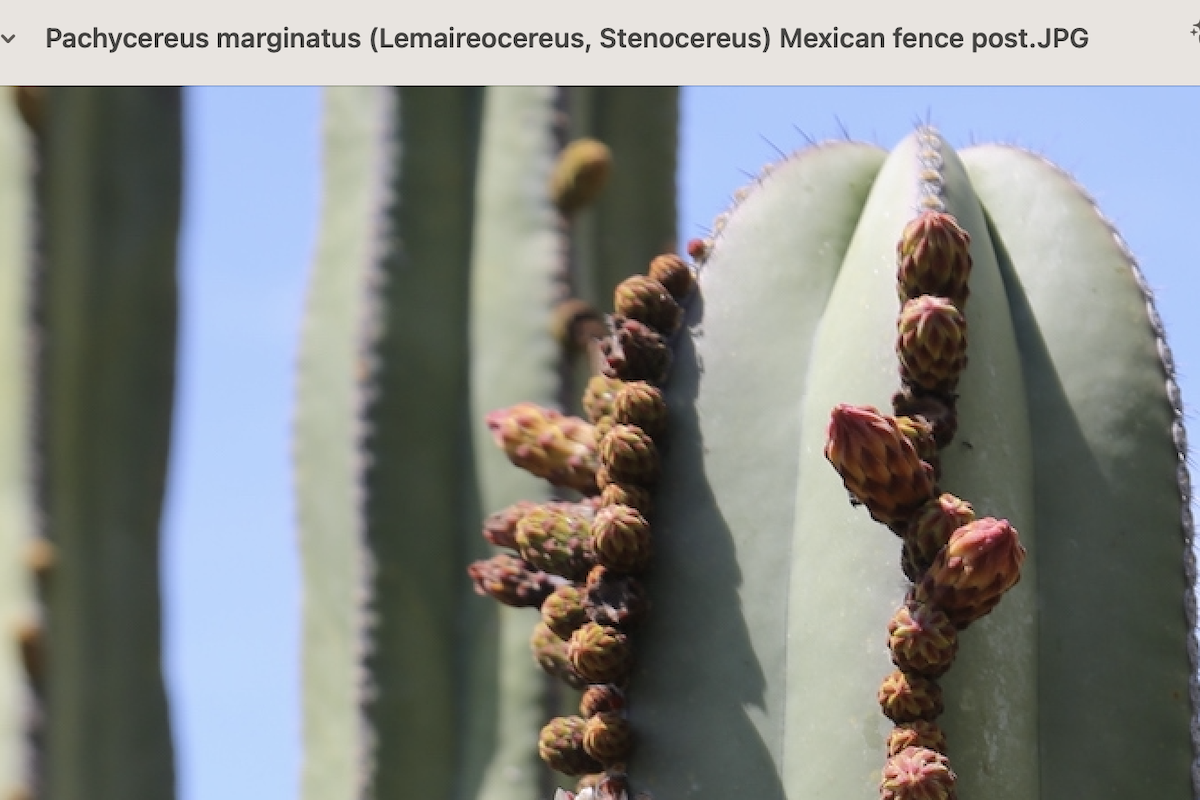
Check out the long file name at top!
It doesn't help that vendors of in-demand succulents, eager to sell them on Ebay or ad-stuffed sites, add to the confusion. They guess what a plant might be, then give it a common name in large letters and a botanical name in tiny ones (because, who knows, buyers may search for that too). Why triple-check IDs or spellings? All you really need to sell a succulent is a killer photo!
My editors and proofreaders taught me to respect and nitpick plant names. But now, rather than doing more books, I prefer to add posts, pages and galleries to my site. They're so much easier to correct and update.
The Delights of Latin Binomials

IMHO the easiest-to-understand guide to “Demystifying Plant Names” is on pp. 738-739 of the Sunset Western Garden Book, ninth edition. In addition to explaining the rationale behind Latin binomials, it translates common species names that describe colors, flower and leaf forms, plant origins and more. Some examples from my own files...
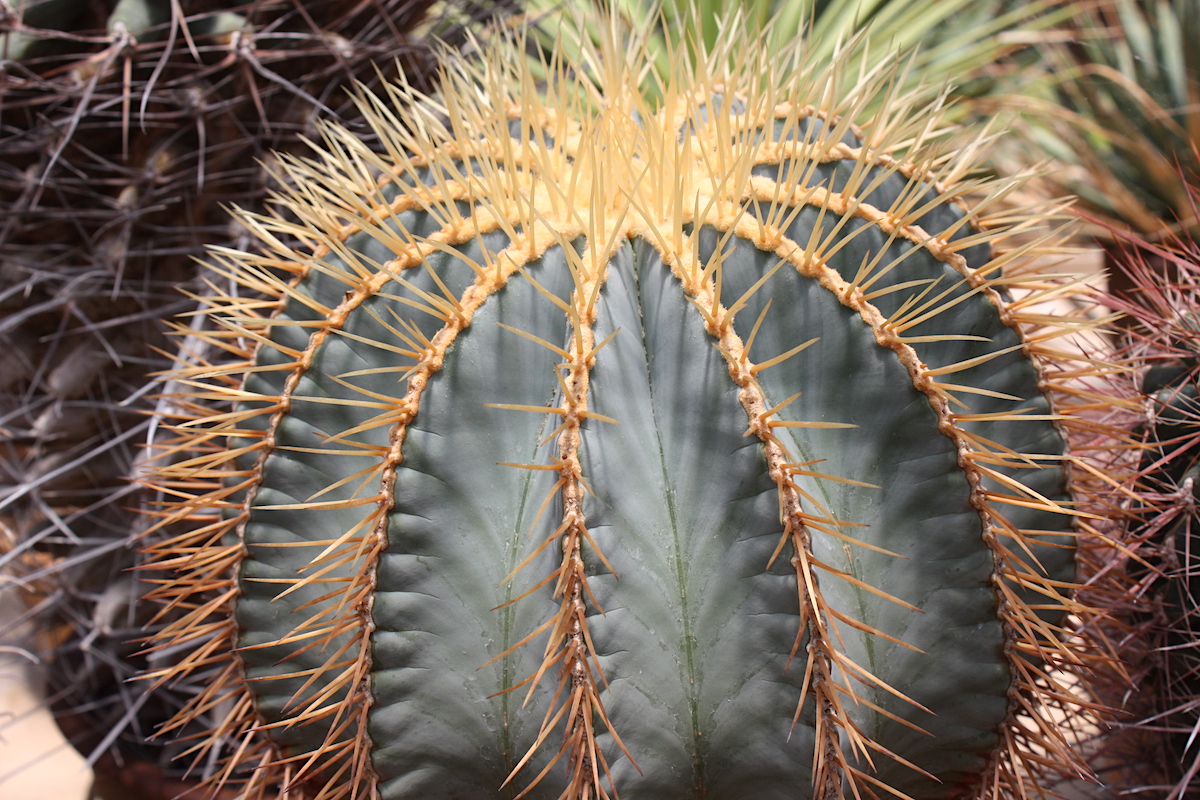
Ferocactus glaucescens
Ferox (Latin) = fierce
Kaktos (Greek) = thistle
Glaucus (Latin) = gray, blue-gray
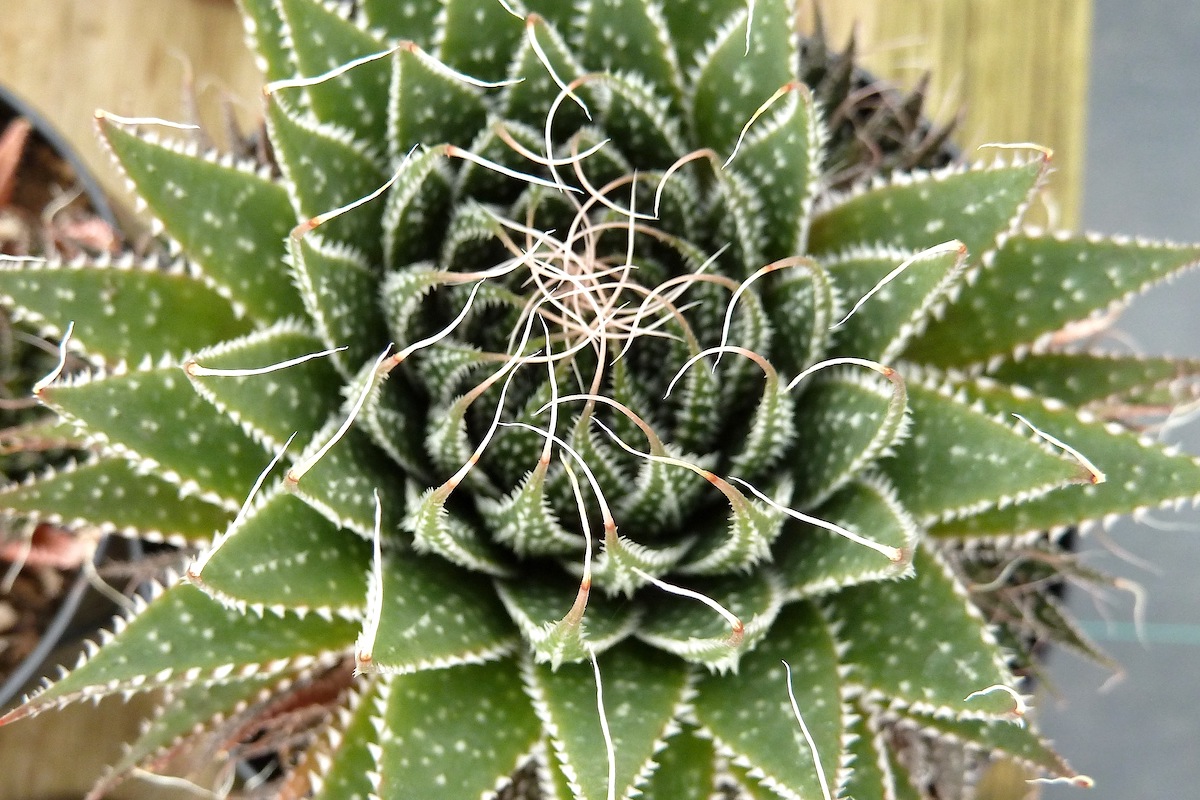
Aloe aristata
Alloeh (Arabic) = bitter
Aristata (Latin) = bearded, hairy
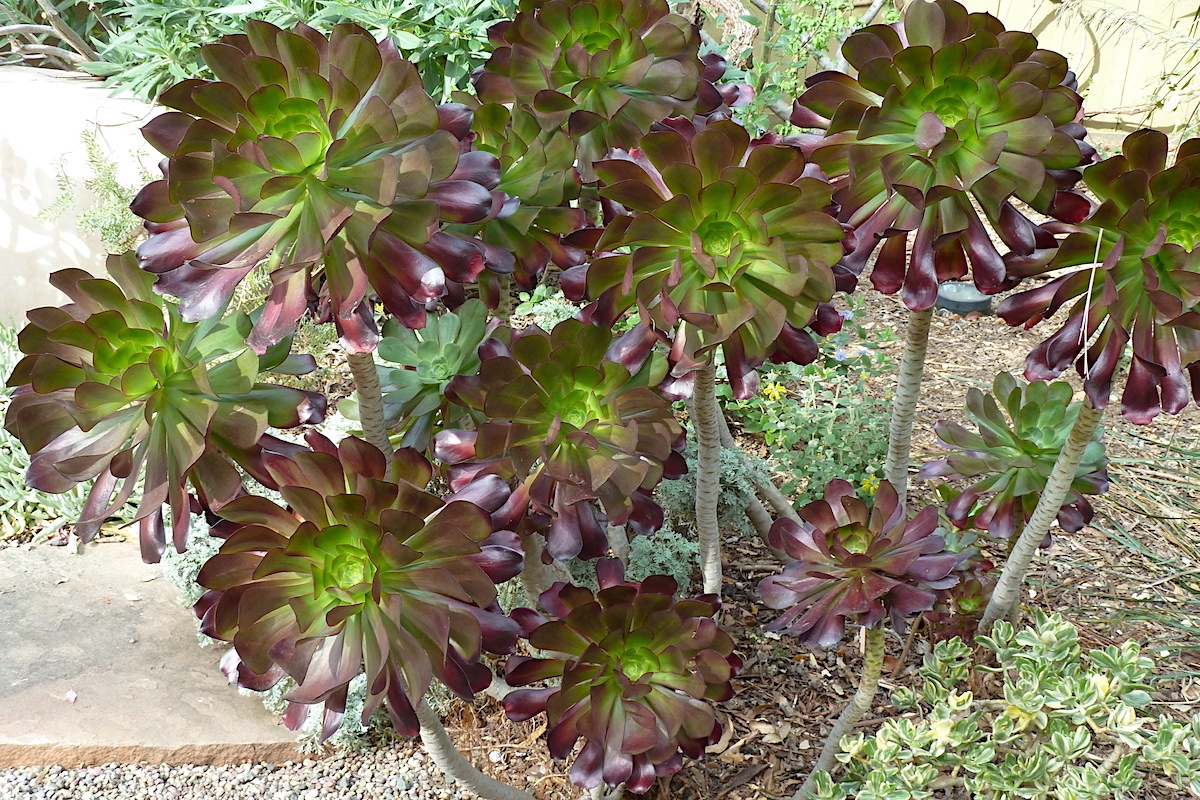
Aeonium arboreum atropurpureum
Aionion (Greek) = long lasting
Arboreus (Latin) = treelike
Atrox (Latin) = intensely
Purpurea (Latin) = purple

Mammillaria compressa
Mammilla (Latin) = nipple
Compressus (Latin) = compressed

Mammillaria plumosa
Plumosus (Latin) = feathery
Have a succulent name you enjoy? Or that mystifies you? Do share it in the comments below!
Books for plant geeks and Latin lovers
- “Latin for Gardeners” by Lorraine Harrison
- “Gardener’s Latin, a Lexicon” by Bill Neal
- And a doorstop of a book: “Composition of Scientific Words” by Roland Wilbur Brown
Links are affiliate.
More info on this site
Types of Succulents from Aeonium to Zebra Plant, Photos & IDs
Debra’s Dozen Easy-Grow Succulent Plants for Beginners
Trying to make sense out of succulents? There are numerous varieties, but these are the most common succulents and those you’ll likely run across. Enjoy growing and discovering these fascinating “plants that drink responsibly!”

-custom_crop.jpg)
Thank you for the Latin lessons! I so enjoyed this post and heartily agree. We spend winters where people from all over N. America gather and I’ve seen arguments break out over the identification of a wildflower because none of them know the Latin names and each person from a different area has a different common name. I’m always amused.
I’ve always loved the simplicity of one name that is agreed upon all over the world by using the Latin, but the pronounciation is a real hazard, and a drawback for making converts! You’ve helped many, I’m sure! Oh, and by the way, your cartoon was spot on! So frustrating, yet so necessary, that the names are being changed as they learn more, usually through DNA.
It’s all so interesting and who knows, maybe it keeps Alzheimers at bay trying to keep up. Ha! Keep up the good work! I love your books.
Hi Cheryl — Thank you for a kindred-spirit comment. Latin, at least for those who share a common alphabet (and for all I know, those who don’t) does have argument-ending powers…providing the name hasn’t changed. If it has, IDing can spark discussion that is usually calm and respectful, unless someone is condescending. If that’s the case, it’s best to simply agree, LOL.
This reminds me of a story I heard long ago about two missionaries who didn’t speak the same language, but managed to communicate through Bible verses. I’ve since wondered which ones. I suppose “hunger and thirst for righteousness” could lead to lunch.